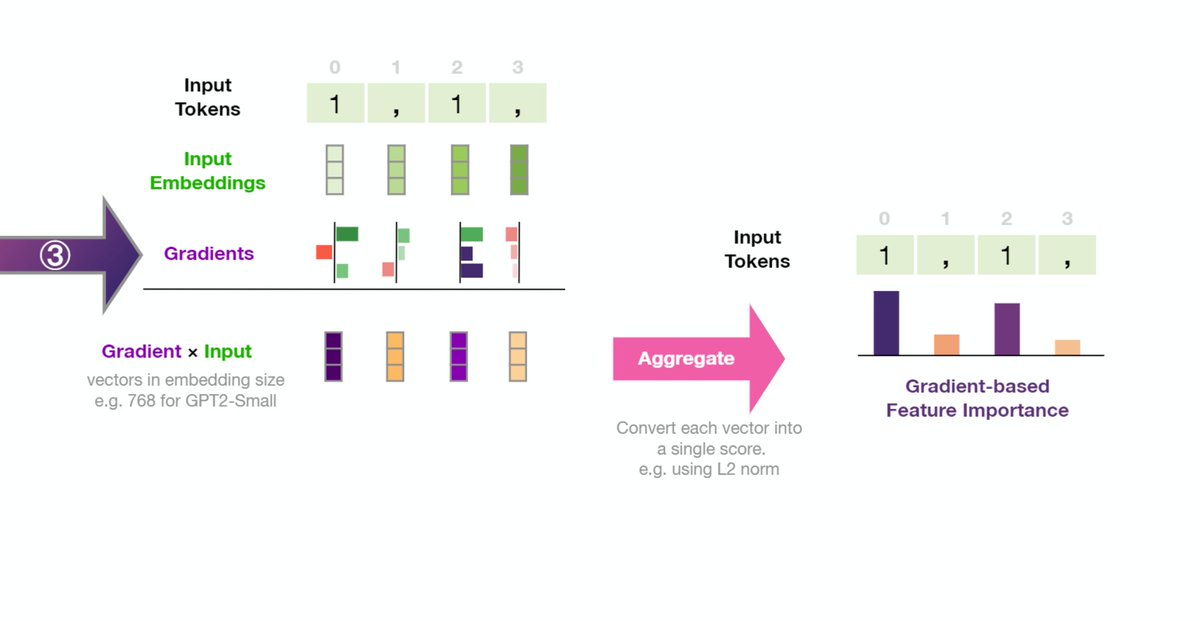Discover and read the best of Twitter Threads about #EMNLP2020
Most recents (4)
I finally watched all the talks I wanted to, ended up importing 56 papers to my bib, and now present to you:
🎉 My 13 favorite papers (sorted alphabetically) at #EMNLP2020! 🔥
[1/15]
🎉 My 13 favorite papers (sorted alphabetically) at #EMNLP2020! 🔥
[1/15]
#EMNLP2020 recommendation:
"Attention is Not Only a Weight: Analyzing Transformers with Vector Norms"
@goro_koba, @ttk_kuribayashi, @sho_yokoi_, Kentaro Inui
Small vectors with high attention still have small impact!
aclweb.org/anthology/2020…
[2/15]
"Attention is Not Only a Weight: Analyzing Transformers with Vector Norms"
@goro_koba, @ttk_kuribayashi, @sho_yokoi_, Kentaro Inui
Small vectors with high attention still have small impact!
aclweb.org/anthology/2020…
[2/15]
#EMNLP2020 recommendation:
"BLEU might be Guilty but References are not Innocent"
@markuseful, David Grangier, @iseeaswell
Translationese references reward the wrong systems!
aclweb.org/anthology/2020…
[3/15]
"BLEU might be Guilty but References are not Innocent"
@markuseful, David Grangier, @iseeaswell
Translationese references reward the wrong systems!
aclweb.org/anthology/2020…
[3/15]
So many fascinating ideas at yesterday's #blackboxNLP workshop at #emnlp2020. Too many bookmarked papers. Some takeaways:
1- There's more room to adopt input saliency methods in NLP. With Grad*input and Integrated Gradients being key gradient-based methods.

1- There's more room to adopt input saliency methods in NLP. With Grad*input and Integrated Gradients being key gradient-based methods.


2- NLP language model (GPT2-XL especially -- rightmost in graph) accurately predict neural response in the human brain. The next-word prediction task robustly predicts neural scores. @IbanDlank @martin_schrimpf @ev_fedorenko
biorxiv.org/content/10.110…
biorxiv.org/content/10.110…

Thanks @_KarenHao for this fun article in MIT @TechReview (with cats😺) covering @HaoTan5's "Vokenization" work at @UNC, upcoming at #emnlp2020!
(also features kind words from the awesome @Thom_Wolf/@huggingface🤗)
Paper: arxiv.org/abs/2010.06775
Try it: github.com/airsplay/voken…
(also features kind words from the awesome @Thom_Wolf/@huggingface🤗)
Paper: arxiv.org/abs/2010.06775
Try it: github.com/airsplay/voken…
And here is the original summary thread by Hao for more info -->
One of the hardest challenges in low-resource machine translation or NL generation nowadays is generating *into* low-resource languages, as it's hard to fluently generate sentences with few training examples. Check out our new #EMNLP2020 findings paper that tackles this. 1/3
We argue that target-side learning of good word representations shared across languages with different spelling is crucial. To do so, we apply soft decoupled encoding (arxiv.org/pdf/1902.03499), a multilingual word embedding designed to maximize cross-lingual sharing. 2/3 


